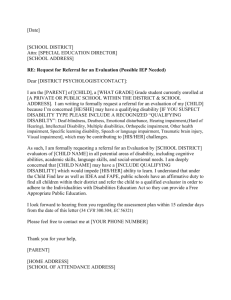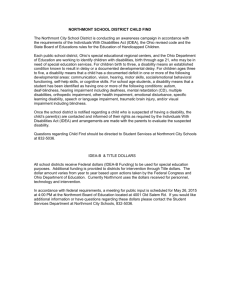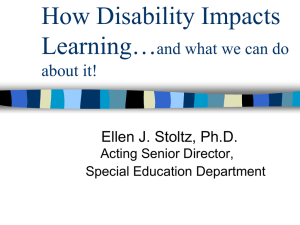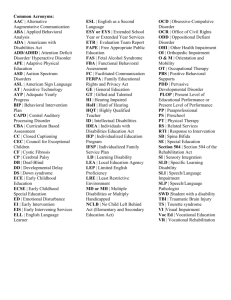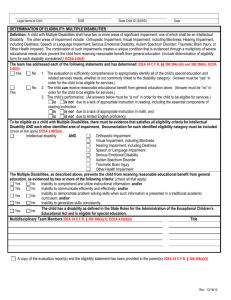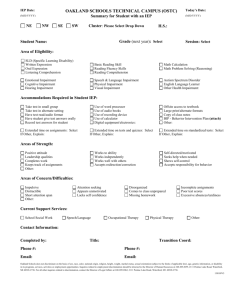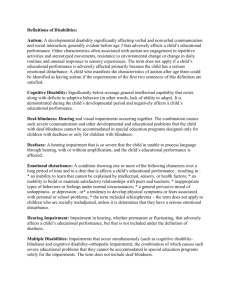UMASD Special Education Plan 6-17-2013
advertisement
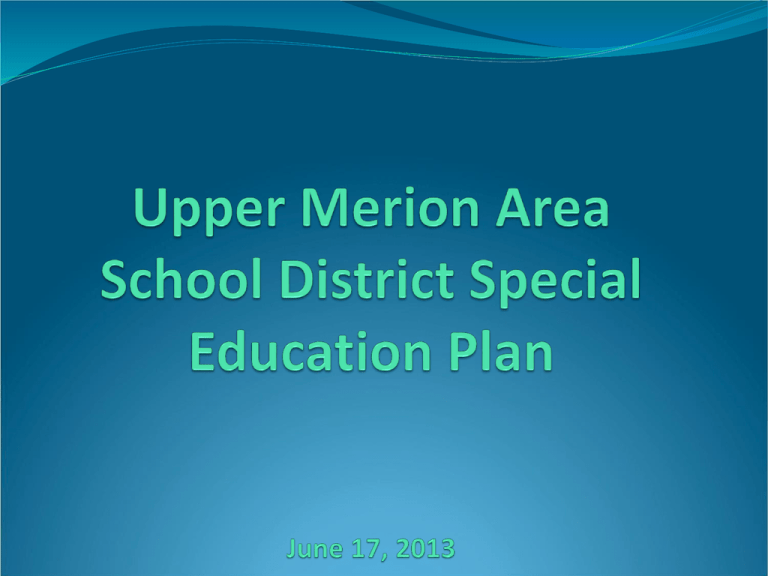
Describes the special education program and services that are provided within a school district and those special education programs and services which are accessed by the school district from outside the school district’s geographical boundaries Reflects on going programs and services and incorporates anticipated changes in programming as a result of improvement planning and other factors Highly qualified staff Full continuum of special education programs Inclusion of all district students for a part of their day Seven Autism Initiative classrooms School based mental health programs Use of research based educational programs Use of technology to allow special education students to access their learning interventions to track student progress Building level data teams who review student progress and make appropriate Transition coordinator at the HS level Job coaching available to students at the High School Specialized nursing services Social skills groups run at all level Supplemental behavioral support for each building Total Enrollment Total Special Education Enrollment Percent Special Education LEA STATE 3,940 1,765,367 523 268,466 13.3% 15.2% Percent of Special Education Enrollment by Disability LEA STATE Autism Deaf-Blindness Emotional Disturbance Hearing Impairment Including Deafness Intellectual Disability (Mental Retardation) Multiple Disabilities Orthopedic Impairment Other Health Impairment Specific Learning Disability Speech or Language Impairment Traumatic Brain Injury Visual Impairment Including Blindness 10.1% -----10.3% -----7.3% ----------11.9% 35.6% 19.9% ----------- 7.9% 0.0% 8.6% 1.0% 7.1% 1.1% 0.3% 10.1% 46.9% 16.2% 0.3% 0.4% SPECIAL EDUCATION DATA REPORT SCHOOL YEAR COMPARISON 2002 TO 2011 Percent of Special Education Enrollment by Disability LEA 2002 Autism 4.2% Deaf-Blindness 0.0% Emotional Disturbance 10.1% Hearing Impairment Including Deafness 1.1% Intellectual Disability (Mental Retardation) 7.2% Multiple Disabilities 1.3% Orthopedic Impairment 0.7% Other Health Impairment 7.4% Specific Learning Disability 39.8% Speech or Language Impairment 27.4% Traumatic Brain Injury 0.2% Visual Impairment Including Blindness 0.7% LEA 2011 10.1% -----10.3% -----7.3% ----------11.9% 35.6% 19.9% ----------- Children with disabilities have access to the general curriculum, and participate in State and local assessments Children with disabilities are educated, to the maximum extent appropriate, with their non-disabled peers and are provided with supplementary aids and services School entities provide access to a full continuum of placement options SE Inside Regular Class 80% or More SE Inside Regular Class Less than 40% SE In Other Settings LEA 62.3% 8.9% 4.5% State 61.0% 9.6% 4.3% SPP 65.0% 8.0% 3.3% Autism Initiative Framework Increased Instructional Time Research Based Programs delivered with fidelity Student Needs Behavioral Issues Policies must be up to date Positive School-wide Behavior Supports School Based Mental Health Services Functional Behavioral Assessments Individualized Behavior Support Plans Staff Training Identification Method for Learning Disabled Students Foster Student Oversight Incarcerated Student Oversight Intensive Interagency Supports The focus of our professional development will be on the Verbal Behavior Project whose main goal is to establish public school classrooms that provide teaching procedures using Applied Behavior Analysis and the Analysis of Verbal Behavior to improve communication, social and other relevant skills for students with autism. The district is upgrading to Read 180 the Next Generation which includes more rigor, more writing, more nonfiction, and more independent practice with text than the previous version. Read 180 is a comprehensive system of curriculum, instruction, assessment, and professional development proven to raise reading achievement for struggling readers in grades 4–12+. This program is designed for any student reading two or more years below grade-level; READ 180 uses adaptive technology to individualized instruction for students and provides powerful data for differentiation to teachers. Functional Behavioral Assessment Positive Behavior Support Community of Caring Non-violent Crisis Intervention Teacher Assistants Personal Care Assistants Focus on post high school opportunities and community resources for exceptional students college programs supports coordination agencies waiver funding Office of Vocational Rehabilitation person centered planning process Student Achievement Effective Progress Monitoring Tools Research Based Intervention Programs Access to the regular education curriculum Standards based IEPs Supplementary Supports Special Education Staff Regular Education Staff Parent and staff trainings

